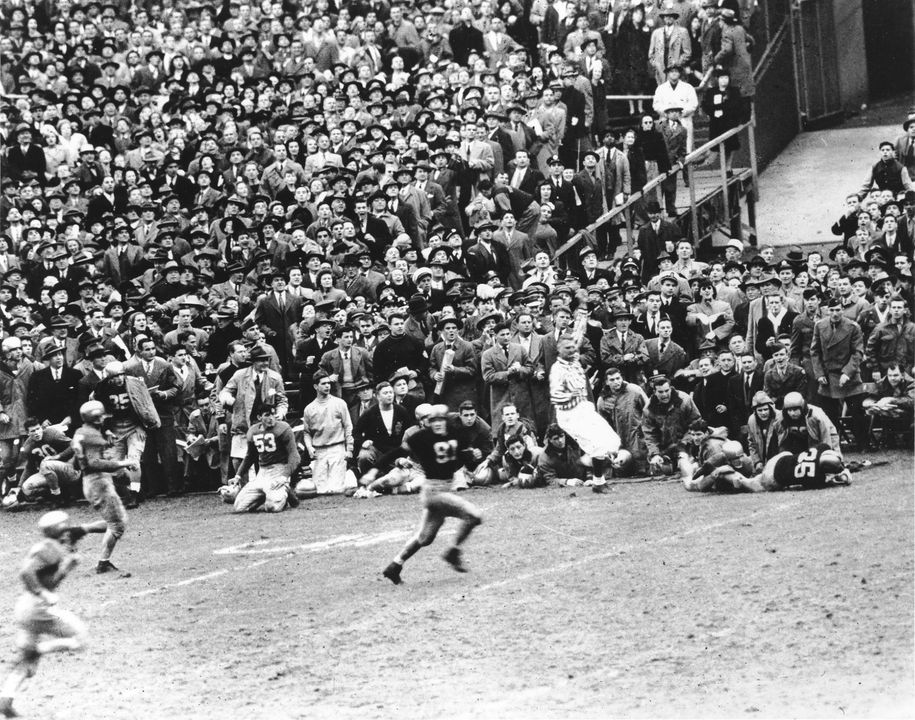Sept. 22, 2016
By Craig Chval, Sr.
The grainy, choppy, black-and-white films make the players look slower. There’s no question that the players were smaller.
Those black high-top cleats? And those leather helmets … well, you know if they didn’t even need facemasks, it really couldn’t be football, could it?
So how do you take seriously a claim that the greatest team in college football history played 70 years ago?
There are no shortages of opinions on the question, in spite of–or perhaps because of–the reality that the question is no more likely to produce a definitive answer than “Ginger or Mary Ann?”
If you Google “Which is the greatest college football team of all time?” you’ll receive about 5,100,000 results in less time than it takes Usain Bolt to flash a smile.
Among the Google-generated responses are ESPN and SBNation and College Football News and CBSSports.com and the Bleacher Report and Saturday Down South. Specific “nominees” include 1995 Nebraska, (Chase Goodbread, NFL.com); 2001 Miami (Sports Stars of Tomorrow) and dozens of others.
And now, Andy Panelli has weighed in. Andy Panelli?
Panelli holds two degrees from Notre Dame, and his father, John, was a back for Notre Dame from 1945-48. Andy Panelli has produced a new DVD titled “The Greatest Team: Notre Dame’s Unrivaled 1946-47 Football Squads.”
The DVD contains a treasure trove of game clips and interviews with Notre Dame players who not only won back-to-back national championships in 1946 and 1947, but also were part of a 36-0-2 undefeated stretch that spanned four entire seasons (1946-49) and netted a third national crown in 1949. Panelli makes a compelling argument that the ’46 and ’47 squads were not only the best in Notre Dame history, but the greatest in college football history.
Along with interviews of players, sportswriters, college football historians and rare footage of an interview with Notre Dame head coach Frank Leahy, the DVD includes insights from Ara Parseghian, who coached against some of the greatest coaches in college football history as Notre Dame’s head coach from 1964-74. Bear Bryant of Alabama, Darrell Royal of Texas, Johnny Majors of Pittsburgh and John McKay of USC were just a few of the head coaches that Parseghian faced–and defeated–while compiling a 95-17-4 record and winning two national championships at Notre Dame.
Parseghian’s head coaching fraternity in those days also included two head coaches who would follow him and win national championships at Notre Dame before joining him in the National Football Foundation College Football Hall of Fame–Dan Devine and Lou Holtz, as well as Woody Hayes (Ohio State), Bo Schembechler (Michigan), Joe Paterno (Penn State) and Frank Broyles (Arkansas). Some would say that as college football celebrated its 100th anniversary in 1969, it was college football’s golden–and greatest–era.
Before playing for the Cleveland Browns of the All-American Football Conference and then embarking on his coaching career, Parseghian was a talented halfback for Miami University in Ohio after serving in the U.S. Navy during World War II. As a player, he experienced first-hand a set of circumstances that resulted in an unprecedented influx of talent into college football–and one that hasn’t been seen since.
It seems Parseghian has the ideal perspective, perhaps even the definitive voice, to pass judgment on Panelli’s claim. He doesn’t hesitate to acknowledge that the post-World War II era was unique in the annals of college football history, starting with just the sheer number of players.
“The situation was the same for everybody playing the game,” notes Parseghian of squads that were reputed to be as large as 200 at some places.
Of course, it was more than simply bigger squads; those players returning from military service were older, bigger and stronger–and perhaps even more significantly, many of them had survived hand-to-hand combat.
“The word is maturity,” says Parseghian. “They weren’t just lollygagging around over there.”
Al Lesko, who played end on those Notre Dame teams, put it this way in Panelli’s DVD: “We had the leaders of that generation that won World War II, and they were tough as nails.”
Ultimately, Parseghian won’t bite on the question as to whether the late `40s were the greatest era in college football history, surprising nobody who understood how his analytical mind contributed to his coaching brilliance.
“I don’t know how you can come to that conclusion,” he says of the idea of comparing eras and teams across eras. “What standards of measurement would you use? You really don’t know.”
Of course, Parseghian is correct–there is no empirical basis for crowning any team as the greatest in history. But in the time-honored tradition of sports debates, Panelli makes an intriguing argument on behalf of the 1946 and 1947 Irish squads.
And just because comparisons across eras often resemble an apples-to-oranges comparison doesn’t mean that there aren’t plenty of facts and figures at Panelli’s disposal.
In dethroning Army as the Associated Press national champion in 1946, Notre Dame permitted just 24 points the entire season. Four of the nine teams Notre Dame faced managed a single touchdown against the Irish while the other five opponents were shut out. Notre Dame was ranked number one nationally in both total offense and total defense, while averaging 30.1 points and surrendering just 2.7 points per game. The Irish never trailed at any point of any game over the entire 1946 season–a feat they duplicated over the course of the 1947 season.
When U.S. involvement in World War II deepened, hundreds of college football players enlisted in military service. Notre Dame’s 1943 starting quarterback, Angelo Bertelli, was called into service in November of that season, missing Notre Dame’s final four games, but not before accomplishing enough in six games to become Notre Dame’s first Heisman Trophy winner and leading the Irish to their first national championship since 1930.
Bertelli’s midseason replacement at quarterback was Johnny Lujack, who then spent the 1944 and 1945 seasons serving in the U.S. military, as did dozens of his Irish teammates. Notre Dame head coach Frank Leahy served as a lieutenant in the U.S. Navy during the 1944 and 1945 seasons (the Irish were coached by Ed McKeever in ’44 and Hugh Devore in ’45), which gave Leahy an opportunity to recruit several players to transfer to Notre Dame to complete their college football careers when the war ended.
Prior to the war, only some prominent college teams were providing athletic scholarships, but with the enactment of the G.I. Bill (Servicemen’s Readjustment Act) in 1944, military veterans could receive cash payments for tuition and living expenses to obtain their college degrees. As a result, dozens of college football teams were flooded with new players.
Parseghian explained the situation in the DVD.
“So what developed as a result of all of that for the whole country, as far as football was concerned, that everybody–all the colleges–came back and they had classes that were 17 years of age and 18 years of age, and classes were 23, 24 and even up to 25.
“And blending that all together at every school, made collegiate football, I think, at a level that it had never been.”
Perhaps Leahy’s most notable wartime transfer recruit was George Connor, who had earned Associated Press second-team All-America accolades in 1943 while playing tackle for the College of the Holy Cross in Worcester, Massachusetts. At Notre Dame, Connor was a two-time first-team All-American and won the first Outland Trophy as the nation’s best interior lineman in 1946. Famed sportswriter Grantland Rice once opined that the 6-foot-3, 240-pound Connor was “the closest thing to a Greek god since Apollo.”
Six players from Notre Dame’s 1946 team are enshrined in the College Football Hall of Fame–Lujack and Connor, along with end Leon Hart, tackle Ziggy Czarobski, Jim Martin, who played end and tackle, and Bill Fischer, who played guard and tackle. Hart (1949) joined with Lujack (1947) to give the ’46 Irish two future Heisman Trophy winners, while Fischer won the 1948 Outland Trophy.
Of course, those six are joined in the Hall of Fame by their beloved coach, Leahy, who finished his career with a winning percentage of .864 (107-13-9, including the 1940 and 1941 seasons at Boston College), which today remains second to Notre Dame’s legendary Knute Rockne (.881) among all head coaches in college football history. In 11 seasons at Notre Dame, Leahy produced six undefeated squads and four consensus national championship teams.
Leahy was at once, an innovative tactician, an unrivaled recruiter and a brilliant taskmaster. Marty Wendell, a four-year starting guard from 1945-48 and a Collier’s magazine first-team All-American, said, “A lot of people say that you got to have the ballplayers. But I think he made the ballplayers.”
Among the ballplayers from the ’46 and ’47 squads, 42 played professional football, a staggering number. Eight of them–Lujack, Hart, Connor, Fischer, Bill Walsh, George Ratterman, John Mastrangelo and Joe Signaigo–earned NFL all-pro honors.
Ratterman’s success is one of the tales that underscores the depth and talent on those teams. In those days of one-platoon football, players generally played both offense and defense. Leahy used his starters on both sides of the ball, but in ’46, he would bring in an entire new lineup in the second and fourth quarters. Ratterman quarterbacked that second team, which actually put more points on the scoreboard than the first team in 1946.
A starter on the Irish basketball team and a monogram winner in four different sports at Notre Dame, Ratterman passed up his last two years of college eligibility to play professional football. He garnered second-team all-pro honors as a rookie with the Buffalo Bills of the All-American Football Conference in 1947 and again in 1950 with the NFL’s New York Yanks.
Walter Grothaus was a center on those Irish teams, and he had a tough time deciding who was better, Ratterman or the Heisman Trophy winner and future NFL all-pro Lujack.
“If Ratterman would have stayed he probably would have been considered as good a quarterback as Notre Dame ever had.”
Art Statuto is another example of a player who couldn’t crack the starting lineup at Notre Dame only to enjoy greater success in professional football. Statuto didn’t get on the field enough at Notre Dame to earn a monogram, but later played in 38 games over three seasons as a center in the AAFC, including 20 starts.
That depth not only allowed Notre Dame to wear down its opponents, but it also allowed Leahy to run punishing practices and scrimmages to develop his players. With so many talented players–including 18 monogram winners at guard and 13 monogram winners at center–there was always a new body to take the place of an injured teammate.
“The best games were really, believe it or not, the scrimmages we had during the week,” claimed John Panelli in the DVD. “People trying to make the team … the first team.
“It was so grueling–and I mean this literally–we looked forward to the game day on Saturdays because it was like going to a Cub Scout meeting.”
Fischer shared a story about two assistant coaches confessing that Leahy had run a full-contact, two-hour scrimmage on Thursday before the season opener at Illinois in order to pick the final two members of the traveling team.
According to his assistants, Leahy had said, “Let’s have a big scrimmage, and that’ll solve the problem. We’ll find out who will make the trip.”
As Fischer put it, “The survivors made the trip.”
The only blemish on the Irish ledger in 1946 was a scoreless tie against Army in perhaps the first “Game of the Century.” Played at Yankee Stadium before a capacity crowd of 74.121, tickets with a face value of $4.80 were being scalped for $500 (over $6,000 in today’s dollars).
Army was two-time defending national champ, having hammered the war-depleted Notre Dame teams of 1944 and 1945 by a combined score of 107-0. The Cadets entered the game ranked number one, while the Irish were number two.
Both teams had good opportunities to score, but the defenses carried the day.
Lujack and All-America halfback Terry Brennan saved the day on successive defensive plays, with Lujack bringing Army Heisman Trophy winner Doc Blanchard down in the open field to save a touchdown and then Brennan intercepting an Army pass deep in Notre Dame territory.
Notre Dame passed up a couple of chances to attempt short-range field goals, decisions Leahy later came to regret.
“It was stupid on our part not to try the field goal,” says Leahy on the DVD in reference to a pair of Notre Dame drives inside the Army 10-yard line. “So it was a rather stupid coaching job from the bench, and I’m the first to admit it.”
The players themselves pointed to another factor in their greatness–their regard for one another. On the DVD, Lujack weighed in what made the team great.
“I’ll tell you about our ’46 and ’47 teams–the thing that I think made them terrific. First of all, we had very good talent. And I think we worked together well. There was a team that developed no animosities, no jealousies at all toward one another.
“George Connor won the Outland Trophy in ’46. Bill Fischer won it in `48. I won the Heisman Trophy,” Lujack recounted.
“But nobody ever talked about winning this, winning that.”
“There was a relationship there that you can’t describe, really,” said John Panelli. “It was unique, like the older big brother and the younger brother. And he’s going to look after you and your well-being and he’s going to teach you what he knows.”
The camaraderie lasted a lifetime. The players, who came to refer to themselves as “Leahy’s Lads,” convened every year to tell stories and reminisce.
“I think the camaraderie of those two teams is unsurpassed by any group of athletes that have every played anywhere,” said Statuto. “We just were so closely knit that it’s carried on all through these years.”
Fischer may have gotten to the heart of the matter.
“The common denominator that we all had, that really held us greatly together, everybody had that same great love for Notre Dame,” he said.
That love produced a football dynasty that arguably has never been matched, as well as lifelong friendships and devotion to Notre Dame. The Lads not only raised the money to commission the sculpture of Leahy that stands outside Notre Dame Stadium, but in the process raised hundreds of thousands of dollars for Leahy’s Lads Scholarships, benefitting countless Notre Dame students.
And while the claim to the greatest ever likely will never be definitively resolved, at least one football expert has concluded that Leahy’s postwar teams were indeed the greatest in college football history.
In 1997, Paul Zimmerman wrote a Sports Illustrated article entitled, “The Golden Boys After World War II, Notre Dame Fielded The Greatest College Football Team In History, But Which Unbeaten Irish Juggernaut Was It: The ’46 Or The ’47 Squad?”
Zimmerman concluded his piece with this: “Leahy died in 1973, at age 64. In 11 seasons at Notre Dame he produced six unbeaten teams and four national champions. His ’46 and ’47 teams were the best, though, and who can argue that they weren’t the best of all time?”
He’ll get no argument from John Panelli and Leahy’s Lads.
The Greatest Team: Notre Dame’s Unrivaled 1946-47 Football Squads has a Facebook page and is available on Amazon.com.
Craig Chval is a former student assistant in the Notre Dame sports information department. A 1981 Notre Dame graduate, he now lives in Columbia, Missouri, and works as associate general counsel at Veterans United Home Loans.








